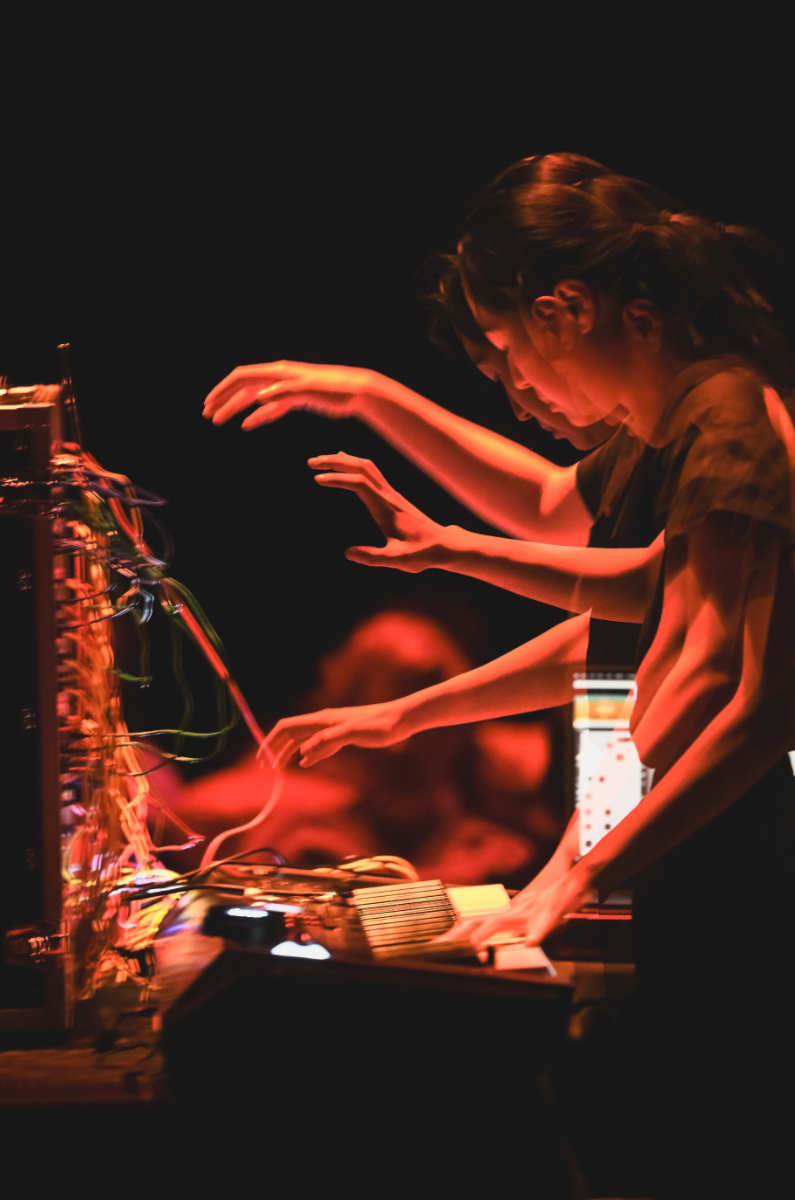Life as a graduate researcher: Monica Lim
Monica Lim empowers more people to make music through technology. Her PhD in interactive composition feeds her artistic practice and connects her to collaborators across disciplines.

“I think we've become a culture where we are consumers of music rather than producers of music,” says fine arts and music PhD candidate Monica Lim.
“Sound used to be made by everyone. When making art, I really like people to be able to come back to making music.”
When we hit a drum hard, we expect to hear a loud sound. This instinct develops during our childhoods. Monica uses it in her work.
“We now have lots of new technologies which have expanded the way that we look at the body,” she says.
“For example, I'm taking people’s movements on Zoom and then using computer vision to make sound with that.”
A PhD can help artists who are stuck in their practice

Many PhD candidates focus on producing one written thesis. But Monica mostly produces creative works. Her thesis will explain her artistic practice and what she has learned through it.
“It's been a really exploratory process for me. I think I've changed my topic pretty much every year of my PhD,” she says.
Having a PhD isn’t that important to artists in itself, Monica thinks.
“If someone wants to come and see your installation and your show, it's not because you have a PhD. It's because you're a good artist,” she says.
But the process of a PhD can be useful to an artist’s journey.
“People often do a PhD when they get stuck on something,” she says.
The process of completing a PhD in Fine Arts and Music can help artists create works that are bigger, deeper or just different to what they had been doing.
“Often, we're so caught up in making work that we forget about the context in which it's made: how we fit in the whole history of art, how we fit in contemporary culture,” Monica says.
“Research gives you the opportunity – and also forces you, frankly – to do all that reading that can then inform your own work and give you even more ideas.”
Academic networks open unique art collaborations
A PhD can also help artists build a community. Monica loves to bring in collaborators from all sorts of fields.

It's been amazing experience to be part of the academic community. Monica Lim
She developed her exhibition Simulacra with dance and human-computer interaction students. The exhibition asked the audience to think about how generative artificial intelligence might affect music. She worked with the Centre for AI and Digital Ethics on an exhibition for the Science Gallery that reflected on social media footprints.
Monica has also worked with Professor of Dance Carol Brown to archive a genre of Indonesian dance at risk of disappearing.
“Cross-gender dance has been very traditional in Indonesia for centuries. There are many forms of it. But due to the religious and political situation, it's become quite difficult there. There are not many practitioners left,” Monica says.
The researchers had invited Rianto, a cross-gender dancer, to Melbourne to archive the dance through motion capture. But they also wanted to experience the dance in context. They travelled to the small Indonesian town of Banyumas.
“Here, we’re used to coming to a performance and sitting down and then seeing something that's beautifully produced at high production values. But we’re also quite distanced from it,” she says.
In Banyumas, Monica saw how the whole community engaged with the performance. The performance space was open and the audience free to talk and roam around. It opened Monica’s eyes to a different approach to performance.
Pursuing a lifelong passion through a PhD
Monica has always loved music. But she didn’t see a career in it.
“I was trained as a pianist. I knew I wasn't good – I did not have the chops to be a classical virtuosic piano player. And I didn't know what the other options were at the time,” she says.
Instead, Monica worked as a tax consultant, a food retailer and a handbag designer with her own label.
But her thoughts always returned to music. Once her kids had grown up, Monica decided it was time to return to study a Bachelor of Music in Interactive Composition.
And afterwards, continuing to a masters was an easy decision. Monica was already doing the creative work that is part of a practice-led graduate research degree.
I thought that putting some structure and some rigor around it would really help me as well as an artist thinking about the work.Monica Lim

“I was aware that the research questions that I had probably were too big to cover in a masters. And I think the supervisors were aware of that, so they encouraged me to convert into a PhD,” Monica says.
Monica had needed to stay near her family in Melbourne. And the University of Melbourne felt like coming home.
The Southbank campus is in the heart of Melbourne’s artistic ecosystem, Monica says. The National Gallery of Victoria and many other galleries and theatres are a short walk away. It’s easy to duck out to see a show or exhibition.
“It's really at the hub of where everything's happening, which is the most fantastic thing about it.”
First published on 16 May 2024.
Share this article
Keep reading
-
Why research with us
Explore the benefits of undertaking your graduate research at the University of Melbourne.
-
Your research options
Explore your options as a graduate researcher at the University of Melbourne.
-
Your study experience
Discover what it's like to be a graduate researcher. Find out about University life, support services, and opportunities for skills development.
-
How to apply
Find out how to apply for graduate research at the University of Melbourne.